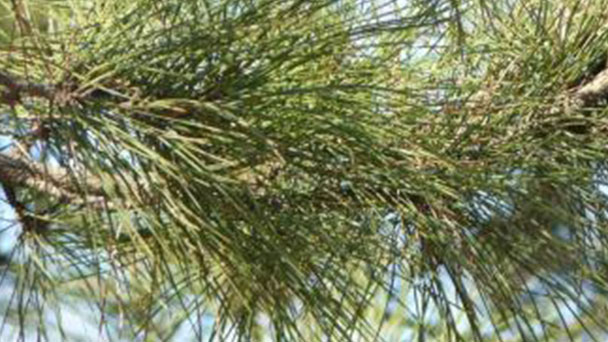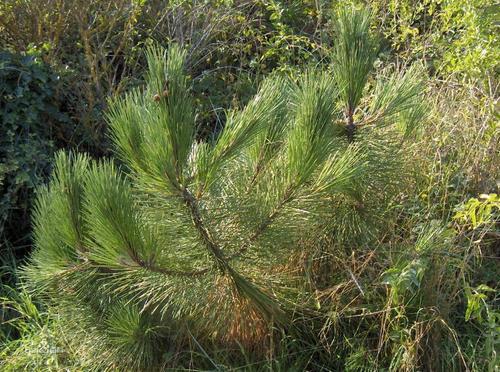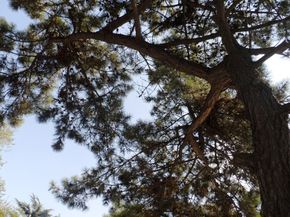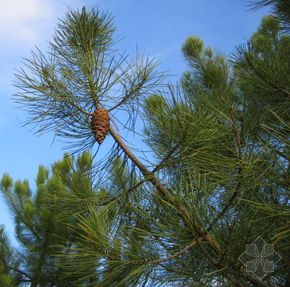Pinus pinaster (maritime pine) profile
Written by Maggie
Mar 22 2021

Pinus pinaster, also called maritime pine or cluster pine, is a plant of Pinus genus in Pinaceae. Pinus pinaster is naturally distributed in Mediterranean coastal areas and has been artificially introduced and cultivated in China.
Pinus pinaster is a light-loving tree that requires a warm and humid climate, but can tolerate dry conditions in summer. The provenances of Pinus pinaster in Portugal and the southern coast of the Mediterranean (especially Algeria and Tunisia) are more susceptible to freezing than the provenances of the Akundine region. As a calcium-hating species, Pinus pinaster is well suited to poor acidic soils but grows most quickly in thick, fertile soil.
Pinus pinaster picture

Morphological characteristics of Pinus pinaster
Stems
Pinus pinaster is an arboreal tree, reaching a height of 30 meters in its native place; Bark is deep longitudinal lobed, brown; The large branches are sometimes drooping, forming a pinnacle - shaped crown; Branches grow once a year, sometimes more than once; Branchlets are reddish-brown, without white powder; Winter bud are rectangular round, brown, no resin.
Leaf
Needles of Pinus pinaster are a 2-needle bunch, 10-20 cm long, 2 mm in diameter, stout, often twisted, light green; Transverse section semicircle, two to three layers of subcutaneous layer cells, under the epidermis in an inverted triangle discontinuous distribution, 6 resin channels, mesophytic.
Fruit
Cones of Pinus pinaster are large, shortly pedunculate, often concentrated, conic-ovoid or ellipsoid-ovoid, 9 -- 18 cm long, symmetrical or subsymmetrical, species scales late opening when ripe; The scale shield of species scale is strongly raised, light brown, scale umbilical protuberance, extend into spines.
Ecological habits of Pinus pinaster
Pinus pinaster is a light-loving tree that requires a warm and humid climate, but can tolerate dry conditions in summer.
As a calcium-hating species, Pinus pinaster is well suited to poor acidic soils but grows most quickly on thick, fertile soil.

The distribution area of Pinus pinaster
Pinus pinaster is native to the Mediterranean coast. China Jiangsu Nanjing and Hyundai mountain introduced cultivation, growing vigorously, for the development of the future of afforestation tree species.
Pinus Pinaster is distributed in East China, North subtropical deciduous, evergreen broad-leaved mixed forest areas (major cities: Nanjing, Yangzhou, Zhenjiang, Nantong, Changzhou, Wuxi, Suzhou, Hefei, Wuhu, Anqing, Huainan, Xiangfan, Shiyan).
The use of the Pinus pinaster
The role of wood
The wood of Pinus Pinaster is heavy, dark red, and has many uses, such as a pillar, joinery board, saw wood, paper pulp, railway sleeper, telegraph pole, various boards, furniture, wood floor, wall protection, construction, pillar, veneer, etc.
The use of bark
Pinus Pinaster Bark extract "Pycnogenol" has strong beauty, anti-aging and medical effects. There are a variety of "Pycnogenol" products on the market, which are expensive and have very good market value.
Function of resins
Resin production (turpentine): The resin of Pinus Pinaster is the raw material for turpentine production.

Latest Updated
- Benefits of Bugleweed - 7 Science-backed Health Benefits
- Bugleweed Dangers & Side Effects - Is It Poisonous?
- How to Plant Evergreen Trees - What You Should Know
- When to Plant Evergreens - Grow Guide for Evergreen Trees
- 12 Wonderful Evergreen Shrubs for Your Garden
- 12 Popular Evergreen Plants with Pictures for Beginners
- When And How To Prune A Lilac Bush Like a Pro
- How to Grow & Care for Lilac Vine (Hardenbergia Violacea)
- Japanese Lilac Tree (Syringa Reticulata) Care & Propagation Guide
- Shumard Oak Pros and Cons - What to Know
Popular Articles
- Winter maintenance of Antirrhinum Majus
- How to Grow Terminalia Mantaly Tree
- How to Grow and Care for Crossostephium Chinense
- How to grow Antirrhinum Majus in spring
- Peristeria Elata (Dove Orchid) Profile: Info & Care Guide
- Underwatered Snake Plant (Sansevieria Trifasciata) - Signs And How To Fix
- How to Care for Brazilian Jasmine Plant (Mandevilla Sanderi)
- How to Grow & Care for Graptopetalum Purple Delight in Summer
- Rosa Chinensis (China Rose): Plant Growing & Care Tips
- How to Care for Baby Sun Rose (Aptenia Cordifolia)